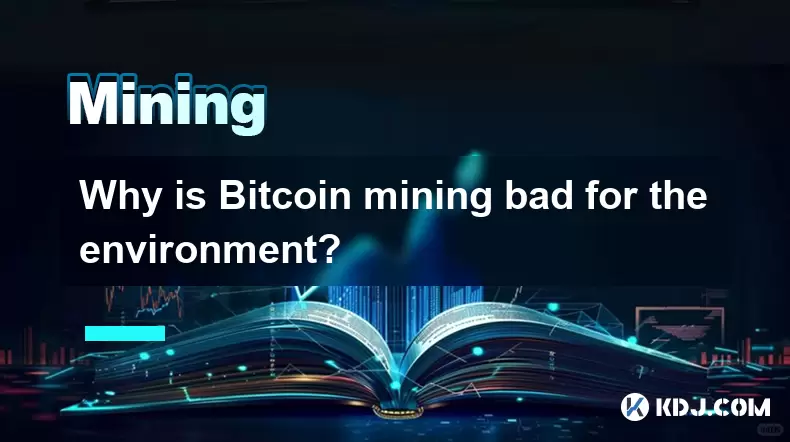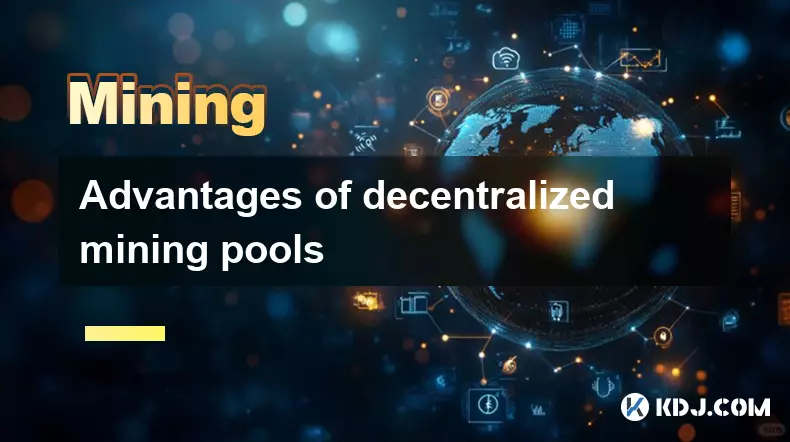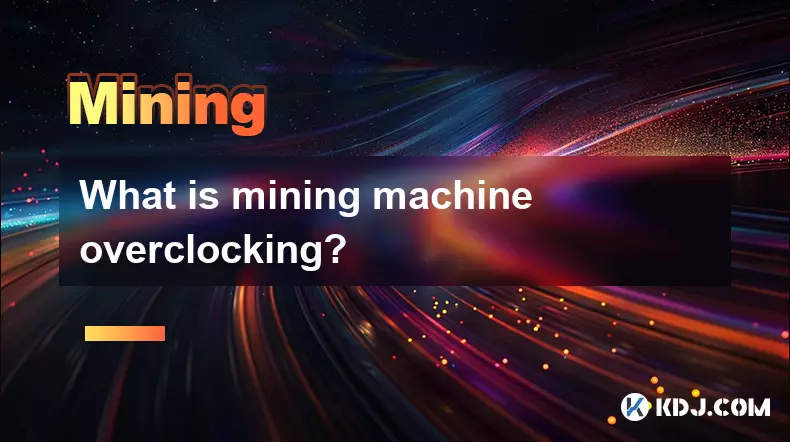-
 bitcoin
bitcoin $122659.385674 USD
0.52% -
 ethereum
ethereum $4484.113342 USD
-0.09% -
 bnb
bnb $1304.229256 USD
-0.85% -
 tether
tether $1.000204 USD
-0.03% -
 xrp
xrp $2.860636 USD
-0.51% -
 solana
solana $227.288799 USD
2.36% -
 usd-coin
usd-coin $0.999805 USD
0.01% -
 dogecoin
dogecoin $0.252837 USD
1.18% -
 tron
tron $0.341149 USD
1.12% -
 cardano
cardano $0.830507 USD
0.33% -
 hyperliquid
hyperliquid $45.792319 USD
0.04% -
 chainlink
chainlink $22.422164 USD
1.55% -
 ethena-usde
ethena-usde $1.000283 USD
0.01% -
 sui
sui $3.511389 USD
0.83% -
 stellar
stellar $0.385276 USD
-0.44%
Why is Bitcoin mining bad for the environment?
Bitcoin mining's massive energy use and e-waste generation raise serious environmental concerns, especially when reliant on fossil fuels.
Jul 12, 2025 at 06:56 pm

Energy Consumption and Its Environmental Impact
Bitcoin mining relies heavily on computational power, which requires a substantial amount of electricity. The process involves solving complex mathematical problems to validate transactions and add them to the blockchain. This activity demands high-performance hardware that operates continuously, leading to significant energy consumption. In many regions where mining is prevalent, electricity is generated from non-renewable sources like coal, which contributes to carbon emissions and air pollution.
The environmental impact becomes more pronounced when large-scale mining farms operate in areas dependent on fossil fuels. These operations can consume as much energy as entire countries, straining local power grids and increasing greenhouse gas emissions. The reliance on coal-fired power plants amplifies the carbon footprint associated with Bitcoin mining, making it a growing concern for environmentalists.
Electronic Waste Generation
Another critical issue tied to Bitcoin mining is the generation of electronic waste (e-waste). Mining hardware, particularly ASICs (Application-Specific Integrated Circuits), has a relatively short lifespan due to rapid technological advancements. As newer, more efficient models are released, older machines become obsolete and are often discarded.
This cycle leads to a constant stream of e-waste, which contains hazardous materials such as lead and mercury. Improper disposal of these components poses serious risks to soil and water systems, contributing to long-term environmental degradation. The scale of this problem continues to grow alongside the expansion of Bitcoin mining activities worldwide.
Resource Allocation and Opportunity Cost
The resources dedicated to Bitcoin mining could be redirected toward more sustainable initiatives. The same energy used to mine cryptocurrencies could power homes, support renewable energy projects, or fuel industrial development. This opportunity cost highlights how Bitcoin mining diverts valuable resources away from efforts aimed at reducing global carbon footprints and promoting sustainability.
In regions experiencing energy shortages, prioritizing cryptocurrency mining over essential services raises ethical concerns. When miners consume vast amounts of electricity, it can lead to higher energy prices for residents and businesses, exacerbating economic disparities and limiting access to clean energy solutions.
Decentralization vs. Environmental Consequences
One of Bitcoin's core principles is decentralization, allowing transactions without intermediaries. However, this decentralization comes at an environmental cost. The distributed nature of mining means that operations can relocate to areas with cheaper electricity, often sourced from polluting methods. This phenomenon creates a paradox where the pursuit of financial independence undermines environmental sustainability.
As miners chase lower energy costs, they inadvertently contribute to the demand for dirty energy sources, reinforcing reliance on fossil fuels. This dynamic challenges the broader goal of transitioning to cleaner, more sustainable energy systems globally.
Alternative Consensus Mechanisms and Their Potential
While Bitcoin uses a proof-of-work (PoW) consensus mechanism, other cryptocurrencies have adopted alternative approaches like proof-of-stake (PoS). PoS significantly reduces energy consumption by eliminating the need for resource-intensive mining processes. Validators are chosen based on the number of coins they hold and are willing to 'stake' as collateral, promoting energy efficiency and reducing environmental impact.
The success of PoS-based networks demonstrates that viable alternatives exist within the cryptocurrency ecosystem. Transitioning away from PoW mechanisms could mitigate the environmental harm caused by mining activities while maintaining network security and decentralization.
FAQ: Frequently Asked Questions
What percentage of Bitcoin mining uses renewable energy?Estimates suggest that approximately 39% to 73% of Bitcoin mining utilizes renewable energy sources, primarily hydroelectric power in certain regions. However, these figures vary widely depending on geographic location and changes in energy markets.
Can Bitcoin mining ever be environmentally friendly?Technological advancements and increased adoption of renewable energy sources offer potential pathways toward greener mining practices. Miners relocating to regions powered by renewables or investing in carbon offset programs may help reduce the industry's environmental footprint.
Are there regulations addressing Bitcoin mining's environmental impact?Some jurisdictions have implemented policies to regulate cryptocurrency mining based on its energy consumption. For example, New York passed legislation requiring environmental impact assessments before approving new mining operations. Such measures aim to balance innovation with sustainability considerations.
How does Bitcoin compare to traditional banking in terms of energy use?Studies comparing Bitcoin's energy consumption to traditional banking systems yield mixed results. While some argue that both sectors have significant energy footprints, others contend that Bitcoin's usage is disproportionately high relative to its transaction volume compared to established financial infrastructures.
Disclaimer:info@kdj.com
The information provided is not trading advice. kdj.com does not assume any responsibility for any investments made based on the information provided in this article. Cryptocurrencies are highly volatile and it is highly recommended that you invest with caution after thorough research!
If you believe that the content used on this website infringes your copyright, please contact us immediately (info@kdj.com) and we will delete it promptly.
- US Treasury, Bitcoin, and Reserve Expansion: A New Era?
- 2025-10-10 02:45:12
- Trading Bots & AI Algorithms: Your 2025 Edge
- 2025-10-10 02:45:12
- Monero and Zcash: Privacy Coins Spark Price Breakout
- 2025-10-10 02:45:38
- Zora Crypto Price Jumps After Robinhood Listing: A New York Minute on the Altcoin Scene
- 2025-10-10 02:25:16
- Digital Gold: Future of Ownership and Investment in the Crypto Age
- 2025-10-10 02:45:38
- BlockDAG, Formula 1, and Crypto Investing: A Winning Combination for Mainstream Adoption
- 2025-10-10 03:05:16
Related knowledge

The difference between staking and mining
Sep 24,2025 at 05:18am
Understanding Staking in the Cryptocurrency Ecosystem1. Staking involves holding funds in a cryptocurrency wallet to support the operations of a block...

How to participate in testnet mining?
Sep 22,2025 at 09:18am
Understanding Testnet Mining in the Crypto Ecosystem1. Testnet mining is a method used by blockchain developers to simulate real-world conditions on a...

How to dispose of abandoned mining machines?
Sep 19,2025 at 08:19pm
Assessing the Condition of Abandoned Mining Rigs1. Begin by inspecting each mining machine for visible damage, corrosion, or missing components. Machi...

How to identify high-quality mining pools?
Sep 21,2025 at 03:19pm
Reputation and Track Record1. A mining pool’s reputation is built over time through consistent performance and transparency. Pools that have operated ...

Advantages of decentralized mining pools
Sep 20,2025 at 04:36pm
Enhanced Security and Resistance to Censorship1. Decentralized mining pools operate on blockchain-based smart contracts, eliminating the need for a ce...

What is mining machine overclocking?
Sep 21,2025 at 07:19pm
Understanding Mining Machine Overclocking1. Mining machine overclocking refers to the process of increasing the operating frequency of a cryptocurrenc...

The difference between staking and mining
Sep 24,2025 at 05:18am
Understanding Staking in the Cryptocurrency Ecosystem1. Staking involves holding funds in a cryptocurrency wallet to support the operations of a block...

How to participate in testnet mining?
Sep 22,2025 at 09:18am
Understanding Testnet Mining in the Crypto Ecosystem1. Testnet mining is a method used by blockchain developers to simulate real-world conditions on a...

How to dispose of abandoned mining machines?
Sep 19,2025 at 08:19pm
Assessing the Condition of Abandoned Mining Rigs1. Begin by inspecting each mining machine for visible damage, corrosion, or missing components. Machi...

How to identify high-quality mining pools?
Sep 21,2025 at 03:19pm
Reputation and Track Record1. A mining pool’s reputation is built over time through consistent performance and transparency. Pools that have operated ...

Advantages of decentralized mining pools
Sep 20,2025 at 04:36pm
Enhanced Security and Resistance to Censorship1. Decentralized mining pools operate on blockchain-based smart contracts, eliminating the need for a ce...

What is mining machine overclocking?
Sep 21,2025 at 07:19pm
Understanding Mining Machine Overclocking1. Mining machine overclocking refers to the process of increasing the operating frequency of a cryptocurrenc...
See all articles


























![🚨IS VECHAIN (VET) A DEAD COIN ?? PRICE ANALYSIS [GET READY NOW] 🚨IS VECHAIN (VET) A DEAD COIN ?? PRICE ANALYSIS [GET READY NOW]](/uploads/2025/10/09/cryptocurrencies-news/videos/vechain-vet-dead-coin-price-analysis-ready/68e7b200b067b_image_500_375.webp)















































